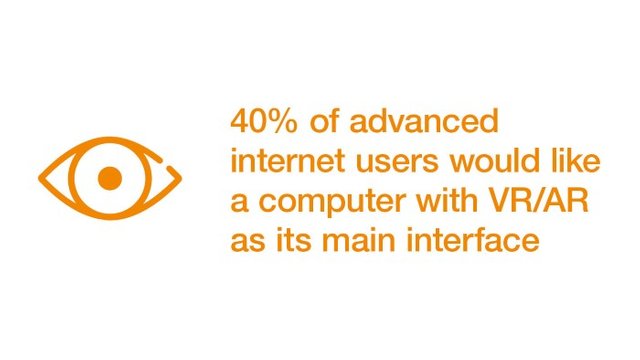
Virtual reality (VR) is currently the fastest growing form of video traffic, with Cisco predicting that it will grow 61-fold between 2015 and 2020.2 When video literally means the world, computing power will be directed at our visual cortex rather than our fingertips.
VR and augmented reality (AR) are key features of the major Q1 2017 update to Microsoft Windows 10. And in fact, more than 40 percent of advanced internet users we have surveyed would like a computer with VR/AR as its main interface.
But our research clearly indicates that these technologies must be truly mobile to become popular. As an early VR adopter complained to us: “I have wires coming out of my head.” Wires simply must go. At the same time, 70 percent do not want to worry about charging mobile device batteries all the time.
Hence, as consumers increasingly rely on IoT devices, and begin moving within VR/AR – and in autonomous, AI controlled cars – demand for battery-friendly, high speed, near-zero latency connectivity is set to grow rapidly.
Reality time means it is time for 5G networks.